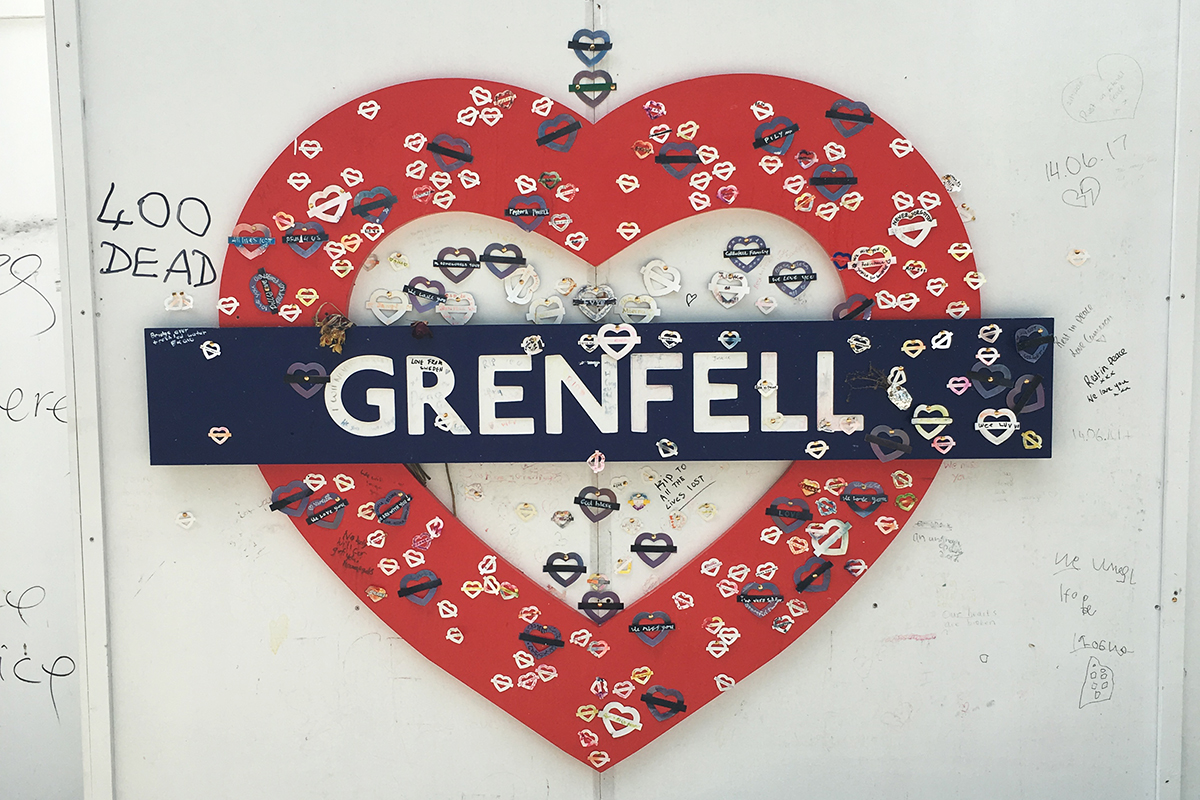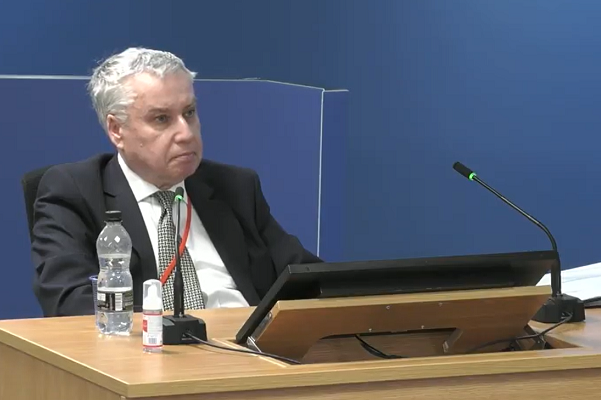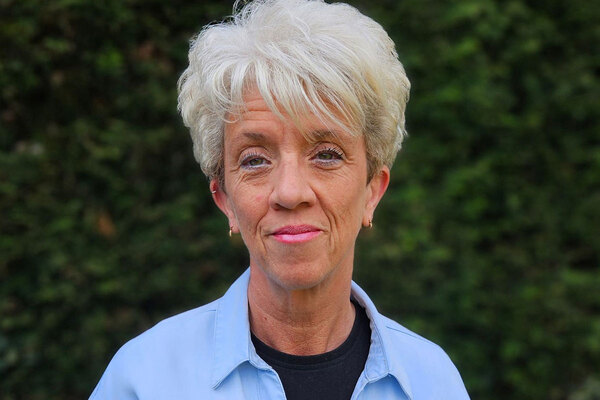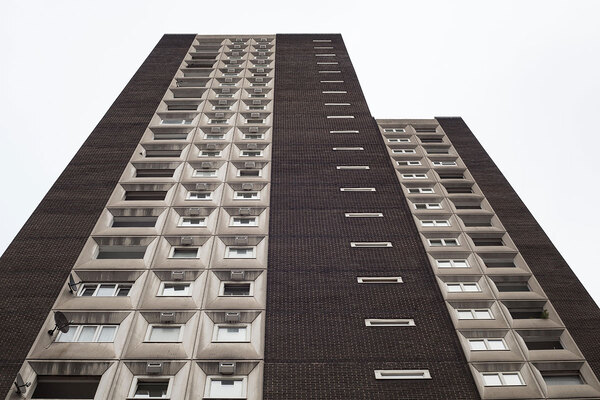Grenfell lawyers warn against leaving inquiry recommendations to ‘languish and gather dust’
The government must step up its efforts to remove combustible cladding from high rises and must not leave the Grenfell Tower Inquiry’s recommendations “to languish and gather dust”, lawyers acting for residents and bereaved families have said.
In what they called an “unusual step”, the 22 lawyers drafted the letter to “draw attention to the absence of any urgent implementation” of the inquiry’s recommendations.
Sir Martin Moore-Bick made 22 recommendations last October, and expressed an opinion that a “programme of remedial work [to remove dangerous cladding] should be pursued as vigorously as possible”.
However, 291 of 458 high rises with Grenfell-style aluminium composite material (ACM) cladding are still waiting for the completion of work and almost 3,000 registrations have been received for buildings with dangerous cladding of other kinds.
The Ministry of Housing, Communities and Local Government (MHCLG) has put £600m into the removal of ACM and promised to provide £1bn for other cladding materials.
But this funding will leave many buildings without finance and the government has also declined to take a leading role in managing the programme of work.
The government is implementing the majority of Sir Martin’s recommendations, but it is watering down key elements to do with the inspection of fire doors and evacuation plans for residents.
The letter, below, reads: “We are taking the unusual step, in common with other groups, nationwide, of drawing attention to the absence of any urgent implementation of the phase 1 Inquiry recommendations published last autumn.
“The most urgent and obvious need is the immediate removal of all combustible cladding facades from residential and other buildings.”
It adds: “As lawyers we are deeply conscious of the history of many Inquiry and Inquest recommendations which have been carefully formulated but thereafter have been left to languish and gather dust in a real or digital file.”
After the Lakanal House fire in 2009, which killed six people, an inquest recommendation to review building guidance “with particular regard to external fire spread” was put off until 2016/17. It had not completed at the time of the Grenfell Tower fire.
An MHCLG spokesperson said: “Preventing another tragedy like Grenfell is at the core of our Building Safety Programme.
“We’re making homes safer by providing £1.6bn to remove unsafe cladding and bringing forward the most significant building safety improvements in almost 40 years.
“More than 70% of buildings with unsafe ACM have been fully or partially remediated. All remaining buildings with unsafe ACM cladding must have works on site by the end of this year – or we will take further enforcement action.”
The lawyers’ letter in full
“This letter is sent on behalf of all the solicitors firms and counsel listed below. We are a group of lawyers who represent the bereaved, the survivors and the residents engaged in the Inquiry into the Grenfell Tower Fire.
We are taking the unusual step, in common with other groups, nationwide, of drawing attention to the absence of any urgent implementation of the phase 1 Inquiry recommendations published last autumn.
The most urgent and obvious need is the immediate removal of all combustible cladding facades from residential and other buildings.
This is urgent and necessary because:
(a) The Inquiry has no power to implement its own recommendations
(b) The Inquiry in its phase 1 report identified, unequivocally, that the cause of the devastating spread of this fatal fire was ‘the use of combustible materials in the external wall of Grenfell Tower’
(c) It is now over three years since the fire and nearly a year since the report. There are still hundreds of buildings and, more importantly, thousands of occupants at risk
(d) The issue is acute in the private leasehold sector where owners/landlords may be unable to bear the cost and occupiers cannot afford it. This in turn leads to a severe reluctance to identify which buildings need remediation. The issue is no less serious in social housing where tenants must rely on their landlords taking prompt action.
(e) This situation is exacerbated by the impact of the pandemic which restricts the movement of people and especially, as now, confines those in urban areas to their homes. The health and safety risks of fire, combined with Covid19, are severe for people’s physical and mental wellbeing
As lawyers we are deeply conscious of the history of many Inquiry and Inquest recommendations which have been carefully formulated but thereafter have been left to languish and gather dust in a real or digital file.
There are 22 recommendations in the Inquiry’s phase 1 report, the progress of which we intend to monitor closely.
The people living in these blocks are living in fear. Some people living in blocks where the cladding and insulation has not been tested live in fear of the results of those tests. Untested blocks are in limbo and flats near worthless.
Other people live in blocks with waking watches meaning that people walk around to make sure that the block is not on fire. This cannot surely be allowed to continue.
Yours faithfully,
Michael Mansfield QC
Adrian Williamson QC
Sam Stein QC
Allison Munroe QC
Abdul Latif Jinadu
Andrew Dymond
Thalia Maragh
Graham French, Russell-Cooke
Marcia Willis Stewart QC Birnberg Pierce
Emma Wilson, Slater & Gordon
Elizabeth Rebello, Duncan Lewis
Shamik Dutta, Bhatt Murphy
Martin Howe, Howe & Co
Cyrilia Davis Knight, Saunders Law
Andrew Brookes, Anthony Gold
Balvinder Gill, Imran Khan & Partners
James Mullion, Janes solicitors
Arfan Bhatti, Oliver Fisher & Co
Jhangir Mahmood, Bishop Lloyd & Jackson
Róisín Gad el Rab, Hanover Bond Law
Sarah Ricca, Deighton Pierce Glynn
Gary Bromelow, Saunders solicitors
10 steps to End Our Cladding Scandal
Based on the recommendations of the Housing, Communities and Local Government Select Committee and backed by a range of sector bodies and MPs from across the political spectrum, these are Inside Housing’s 10 steps to End Our Cladding Scandal:
- The government must lead an urgent national effort to remove all dangerous cladding from buildings by June 2022.
- The Building Safety Fund must cover all buildings, regardless of height, and a range of internal and external fire safety defects, not just cladding.
- The government should provide the money up front and then seek to recover it from any responsible parties or via a temporary levy on development.
- Social housing providers must have full and equal access to the fund.
- The government must compel building owners or managers to be honest with residents about fire safety defects.
- The government should cover the cost of interim safety measures.
- The government should act as an insurer of last resort and underwrite insurance where premiums have soared.
- A fairer, faster process is needed to replace the EWS form and funding is necessary to ensure all buildings requiring a form are surveyed within 12 months.
- Mental health support must be offered to affected residents.
- Protecting residents from historic and future costs must be a key commitment of new building safety legislation.












